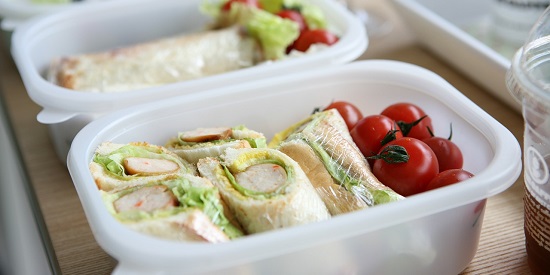School lunch boxes made easy: involve the kids says Deakin dietitian
Media releaseAs a new school year looms large, many parents may be dreading the thought of making school lunches every day but Deakin University's Dr Alison Spence, an expert in child nutrition, has some tips to help make the process easier and more fun for parents and children alike.
Dr Spence, an Accredited Practising Dietitian and Lecturer in Nutrition and Population Health at Deakin’s Institute for Physical Activity and Nutrition (IPAN) within the School of Exercise and Nutrition Sciences, said that involving children in preparing their own lunch helps to reduce the load on parents while promoting healthy eating habits for life.
“Having the kids help pack their lunch can be good fun and gives you a great opportunity to teach them about healthy eating and the importance of food safety,” Dr Spence said.
“While children need parents’ help and involvement in the early years, by developing and encouraging these skills early, in later years you will reap the benefits of having more self-sufficient kids. Plus, if you give kids a say in what they’re having for lunch and involve them in preparing it, they’re much more likely to be interested in eating it.
“It’s never too early to start building skills and knowledge around healthy eating. For example, young children might like to choose a piece of fruit and wash it before popping it in their lunch box while older children can be guided to put together their own sandwich and, eventually, prepare and pack their whole lunch.
“Involving the kids doesn’t mean catering to whims or buying more junk food. Talk with your kids about healthy eating, and what is appropriate lunch box food, and then let your child make choices within a set of healthy options. For example, you might set an expectation that a lunch box always contain at least one type of vegetable and one fruit, and then let your child choose which ones.”
While some parents delight in packing their children off to school with extravagant, Instagram-worthy lunch boxes, Dr Spence said that school lunches don’t need to be complicated.
“Preparing school lunches need not be overwhelming – there are certainly ways to make the process easier and more efficient,” Dr Spence said.
“When cooking dinner, for example, chop up a few extra veggies to pop in tomorrow’s lunch box.
“Another time saver can be packing the same healthy lunch for the whole family on some days. Not only does this mean less work, but if kids see that Mum and Dad are having the same lunch, they’re more likely to eat their own.
“We know that one of the main influences on children’s eating is their parents’ role modelling. This includes Dads – packing the lunch box, role modelling and teaching healthy eating doesn’t always have to be up to Mum.”
Dr Spence reassured parents that they shouldn’t despair if their child occasionally comes home without emptying their lunch box.
“One way to look at it is that it’s the parents’ job to ensure that healthy foods are readily available and it’s the child’s job to regulate how much they eat,” Dr Spence said.
“Talk to your child about the food they don’t eat, and ask them to contribute ideas. If they say they were full, then consider adjusting the amount you pack. If they say they didn’t have time to eat, discuss quicker-to-eat healthy alternatives. And if they say they didn’t like it, encourage them to help plan the family’s lunches for tomorrow.
“It’s also important to develop realistic expectations around how much kids eat and, perhaps more importantly, how much food kids need to eat. The alarmingly high rates of obesity in Australia suggest that overeating is more of a problem than undereating – most Australian children are not going hungry, even if they aren’t finishing their lunch boxes.”
Share this story

